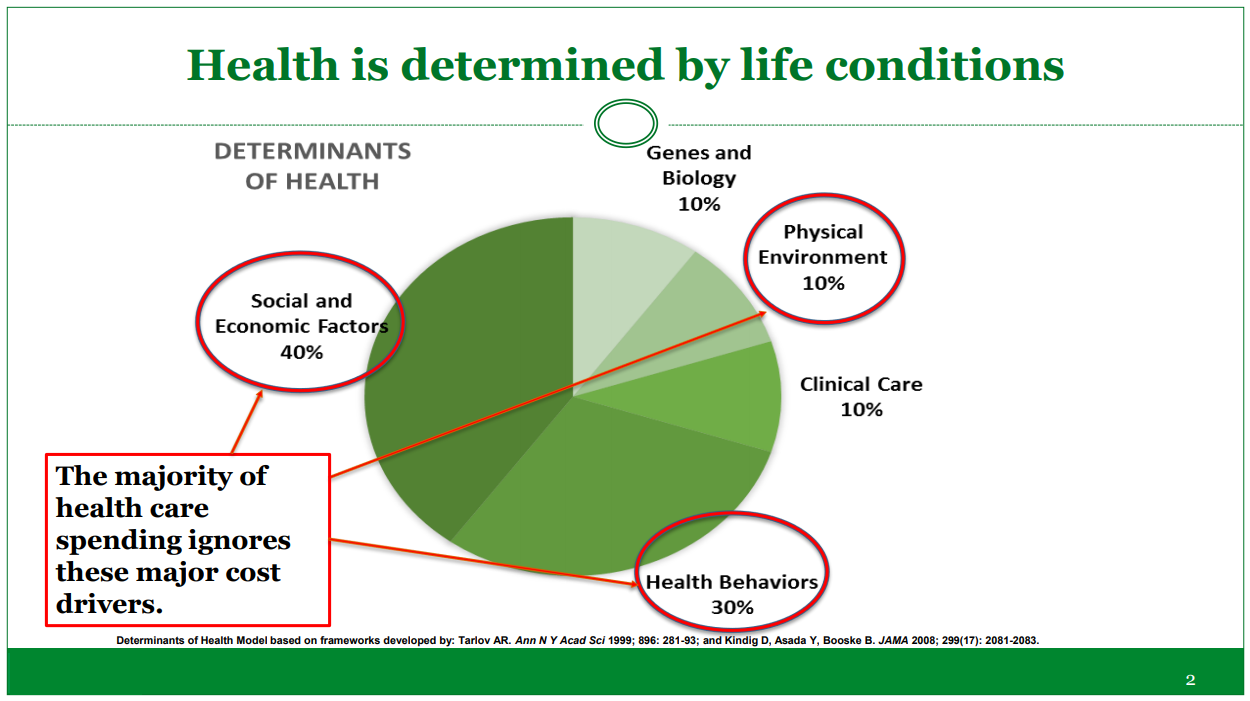
Share On Social!
Governors have the opportunity to use state resources and create partnerships to improve the social and economic inequities that cause poor health outcomes, especially among communities of color.
But not all governors have the tools to boost public health.
That’s why the National Academy for State Health Policy (NASHP) and the de Beaumont Foundation released four big tools to help governors understand what influences public health and how to embed upstream health- and prevention-related plans into the structure of government.
“We’re the state that’s going to tear down the systemic barriers to work and education faced by people of color, people with disabilities, veterans and women,” said Washington Gov. Jay Inslee in his inaugural address, according to an NASHP blog post. “We’re the state that embraces our differences and diversity. We’re the state making sure our government looks like the people it serves.”
A Governors’ Role in Public Health
Governors can play a big role in public health promotion.

The conditions in which residents live, work, play and age make up 80% of the factors affecting their health, which is why health disparities can be found based on race/ethnicity, income, and geographic location.
The geographic distribution of diabetes, for example, is associated with lower median household income and fewer grocery stores, parks, sidewalks, crosswalks, and transportation options.
However, only a handful of states are connecting well-being to transportation, education, housing, labor, agriculture, environmental quality, economic development, criminal/juvenile justice, and early childhood services—contributing to health disparities that affect government budgets.
Governors are uniquely positioned to maximize state resources towards upstream strategies to reduce health disparities and improve health across the lifespan.
Of the health-related social and economic factors identified in state of the state and inaugural addresses, governors most commonly planned to tackle education, jobs, and infrastructure.
Fewer governors mentioned opioids and the environment. Even fewer focused on transportation, violence prevention, child welfare, justice, and equity.
This led NASHP to create its toolkit with four practical, real-world tools to help governors and their teams address preventable health concerns and maximize resources across policy priorities.
1. Understand the Influences of Health:
The toolkit provides resources that explain the social determinants of health and illustrate how non-clinical factors affect health.
It includes:
- Evidence;
- Infographics;
- Interactive maps; and
- Strategies to reduce disparities and improve health.

These resources helps make the case that health should be part of all governors’ policy agendas.
2. Organize Teams and Resources
This part of the toolkit helps governors’ structure and budgetary decisions.
It includes organizational models and cross-sector job descriptions. It specifies how to incorporate funding streams to organize a team, identify priorities, and coordinating across programs.
3. Frame the Message
This part aids in the development of public communications when implementing health-focused policy.
It contains talking points, key messages, and data visualization resources to help state leaders craft the right message as well as find partnerships.
4. Support Your Priorities
Access to early education and student mental and emotional resources are critical for lifelong health and wellbeing.
But no matter what priorities a governor has, this portion of the toolkit “provides talking points, go-to resources, and potential cross-agency collaborations that can promote health through a wide range of policy priorities,” according to NASHP.
It contains fact sheets on:
- Education
- Jobs
- Opioids
- Budgets
- Taxation
- Infant mortality
- Housing
- Emergency preparedness
- Transportation
By making the case for health in all priorities, governors can flip the script.
Get the Word Out
Share this toolkit with your governor and senior staff. Find their contact information through the National Governors Association’s directories.
You can also share this with the directors of key state departments, such as transportation, education, housing, labor, agriculture, environmental quality, economic development, criminal/juvenile justice, and early childhood services.
Don’t hesitate to talk about these issues on social media. Use a Salud America! model post to spread the message:
- Governors can ensure all agencies row in the same direction to help all residents live healthy, safe, and productive lives. salud.to/govtools #statehealthpolicy
- States can improve the health and education outcomes by bringing health centers into schools, supporting trauma-informed approaches, and developing an early child development strategic plan or an ESSA State Plan. salud.to/govtools #statehealthpolicy
- The opioid epidemic has social & financial implications for states, including spending on health care, social services, education, & criminal justice. States can expand access to trauma-informed approaches & evidence-based treatment. salud.to/govtools #statehealthpolicy
- Reliable transportation is important for health equity and a thriving local economy. States can encourage cities to introduce or expand public transportation systems, particularly for people who need it most. salud.to/govtools #statehealthpolicy
- States can support the building of adequate lighting, sidewalks, crosswalks, and bike lanes, while safely accommodating cars and public transit. salud.to/govtools #statehealthpolicy
By The Numbers
27
percent
of Latinos rely on public transit (compared to 14% of whites).



